7 Ways to Prep Your Diesel for Winter
It’s that time of year again. The sting of summer has worn off and cooler temps are steadily creeping in. If you’re a diesel owner and expect your truck to be there for you when you need it most, it’s time to be proactive; it’s time to prepare it for winter. From testing the health of your batteries, to adding an anti-gel fuel additive to the tank, to changing motor oils, this checklist is designed to help you beat the frigid conditions that lay ahead.
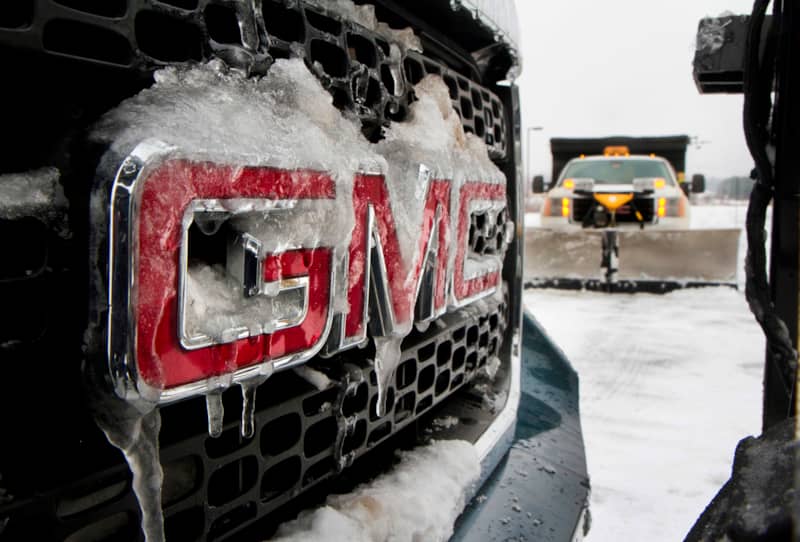
1. Test Your Batteries
The average battery lasts between two and five years. How many years have you had yours? After enduring a hot summer (where corrosion and fluid evaporation often occur), followed by a lack of cold cranking amps capacity once colder temperatures arrive, winter has a way of killing weak batteries. To avoid being stranded, now is the time to test the health of your batteries.
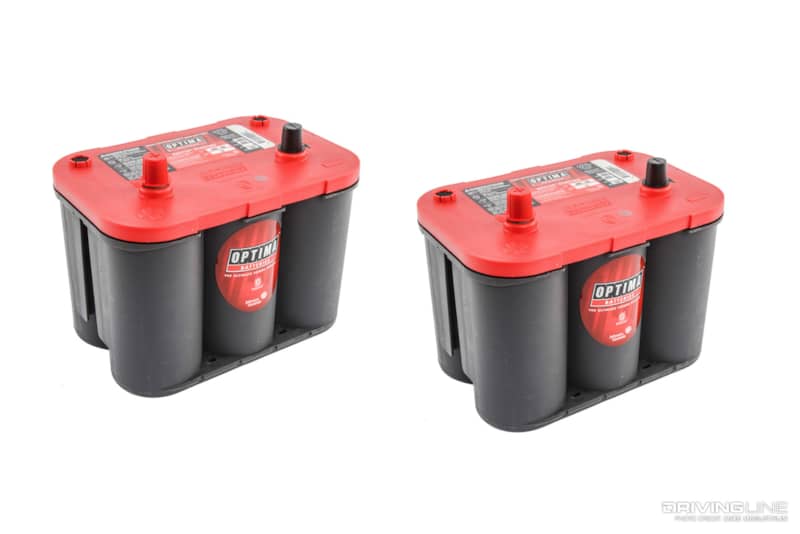
With the engine off, set your multimeter to any voltage setting above 15 volts and connect to the battery leads. A fully charged battery should measure at least 12.6 volts. Then make sure voltage doesn’t drop below 10 volts as you crank the engine over (below 10 volts is a sign of a dying battery). With the engine running, voltage should measure between 13.7 to 14.7 volts. Also make sure you clean up the battery cables for a corrosion-free, good connection. Last but not least, it’s also good practice to test the output of your alternator (they don’t last forever, either), as a unit with the inability to recharge the batteries can result in a truck that won’t start, and a double whammy repair cost (new batteries and alternator).
2. Glow Plug Testing and Replacement (If Applicable)
Should your diesel employ glow plugs to aid cold starts (like all Duramax and Power Stroke engines do), it’s important to make sure they’re in tip-top shape before winter hits. In the Duramax segment, glow plug failure runs rampant. For this reason, many neglect replacing them while the truck seems to be starting fine (during spring or summer), but end up regretting it come fall and winter. Luckily, the glow plugs can be accessed externally on all Duramax mills (as well as on most Power Stroke engines) by pulling the inner fender well to access each bank.
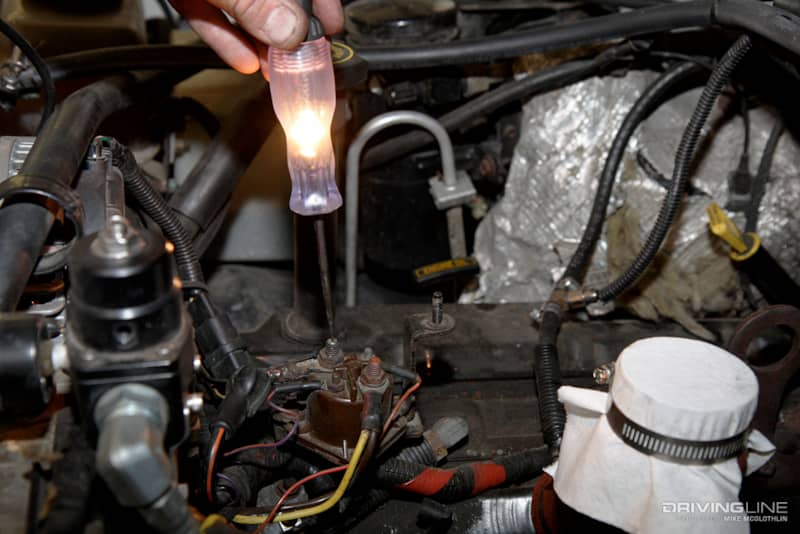
Of course, starting with fresh glow plugs is never a bad idea. If you go this route just remember one thing: never cheap out on them! Stick with brand new, OE replacements, as some aftermarket glow plug tips have been known to swell, crack, or break off, and drop in- cylinder. On engines that don’t necessarily throw a CEL when a glow plug or glow plug relay fails (such as with the 7.3L Power Stroke, shown), it pays to hit them with a test light to make sure they’re in good working order.
3. Use Your Block Heater!
You wouldn’t believe how many diesel owners don’t utilize their block heater in sub-zero degree temperatures. And more often times than not, it’s due to the owner not even knowing his or her truck is equipped with one!
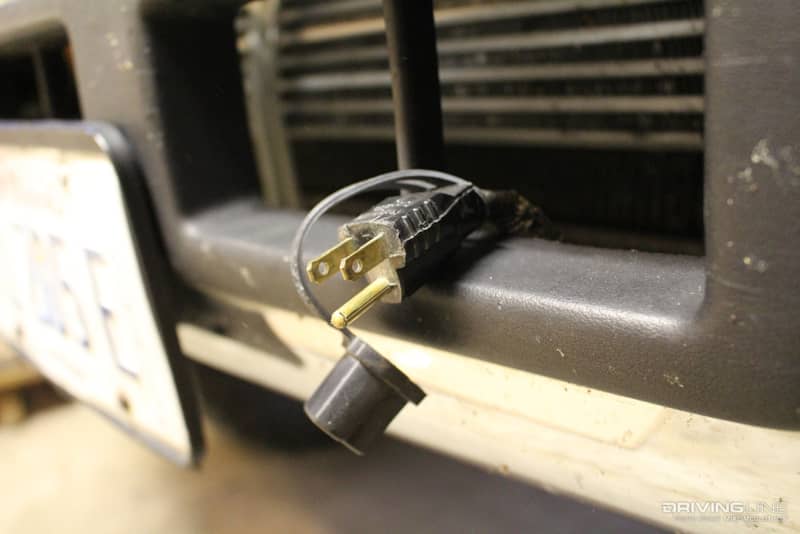
If you’re unsure as to whether or not you have a block heater, do yourself a favor and prod around behind the front bumper and grille to see if one exists. If you don’t have one, it’s a worthwhile investment for anyone living in or above the rust belt.
4. Test Your Block Heater
In frigid conditions, a block heater can be a life saver. Unfortunately, most diesel owners don’t discover that theirs has stopped working until they need it. Don’t be this guy. Testing your block heater’s functionality is simple, as they’re either working or not working.
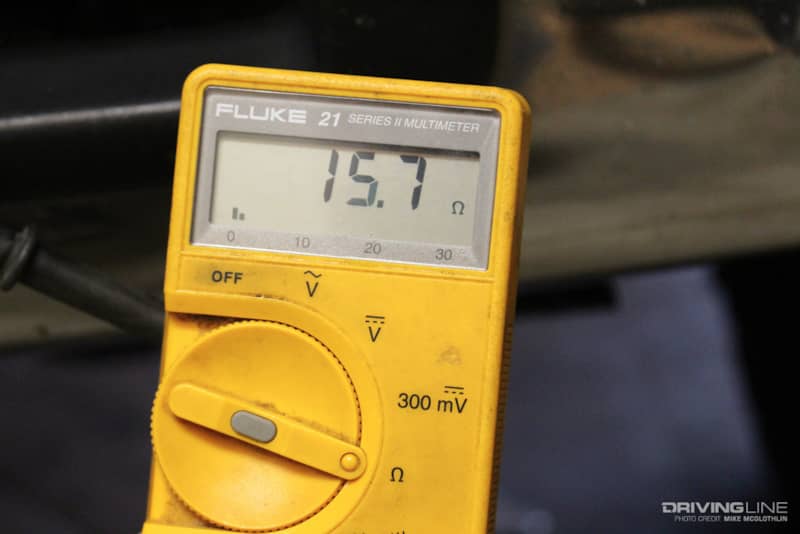
First, clean off the prongs on the plug, then get out your multimeter, set it to ohms (to show resistance), and attach its leads to the plug prongs. A reading of 9 to 25 ohms indicates a working block heater. Any lower than that and you’ll want to inspect the block heater cord itself. We’ve seen wires pulled out of the plug (usually due to stretching the cord in order to reach an outlet), which requires a simple wiring repair.
5. Use an Anti-Gel Fuel Additive
In severe cold, even the best winter blend diesel fuel can reach its cloud point (the measure of diesel’s low-temperature operability) and begin to gel up. Due to so many differences in fuel quality existing across North America and the fact that each vehicle’s exposure to cold weather will be different, there is no definitive temperature in which diesel begins to gel. However, most fuels reach their cloud point between 20 degrees F and -18 degrees F. This is why it’s always a good idea to run a fuel additive during winter. Make sure to use an all-season additive or one that’s specifically designed to shine in cold climates.
We’ve always been fans of Stanadyne’s All-Season Performance Formula. It’s designed to provide cold weather and anti-gel protection, disperse water without the use of alcohol, offer a bump in cetane, prevent corrosion and be compatible with ultra low sulfur diesel (ULSD). Adding to this additive’s credibility, Stanadyne manufactures its own injection pumps and injectors—so if anyone knows how to make a good additive it’s probably these guys.
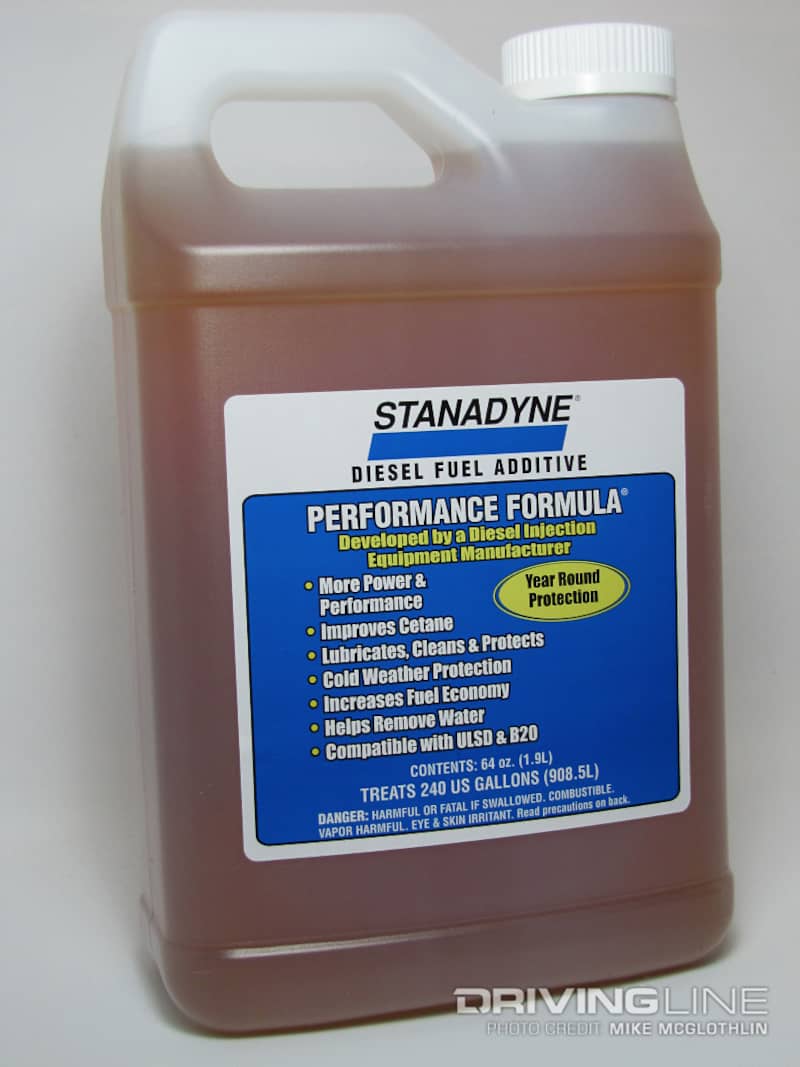
For emergencies when the engine won’t start due to frozen fuel, we would recommend either Diesel 911 from Power Service or Diesel Recovery from Amsoil. It’s important to note that these products are best used in emergency gel up scenarios only. They’re not intended to be run through your tank on a regular basis.
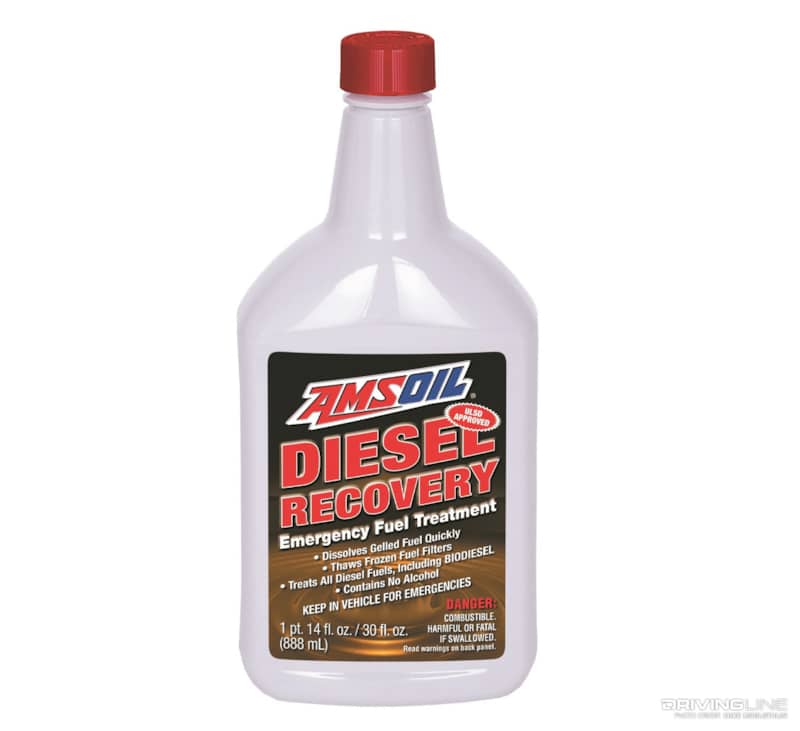
6. Change Fuel Filter(s)
It’s a fact that the fuel filter is the most common freeze point for diesel fuel. When compared to what is stored in the fuel tank, a very minimal amount of diesel remains in the fuel filter when your truck is allowed to sit overnight.
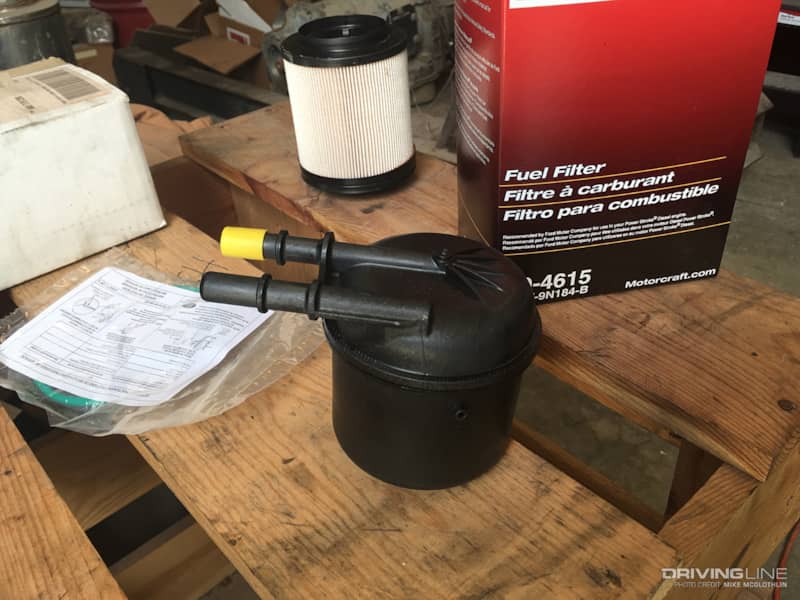
While installing a new fuel filter right now isn’t a guarantee that you won’t have gelling issues, it does offer you a fresh start over what might be a partially clogged cartridge that’s been in use for thousands of miles. Besides, changing fuel filters before winter reduces your chances of having to perform the job during the coldest part of the year. Last but not least, always keep an extra fuel filter and/or water separator in the cab—you never know when you might need it.
7. Ditch the Weight
As if cold starts aren’t hard enough on your batteries, starter and engine, conventional 15 weight motor oils turn to molasses in arctic temps. Switching to a lighter weight (preferably synthetic) oil will greatly improve its cold temperature flow characteristics, thereby saving wear and tear on the engine’s internals.
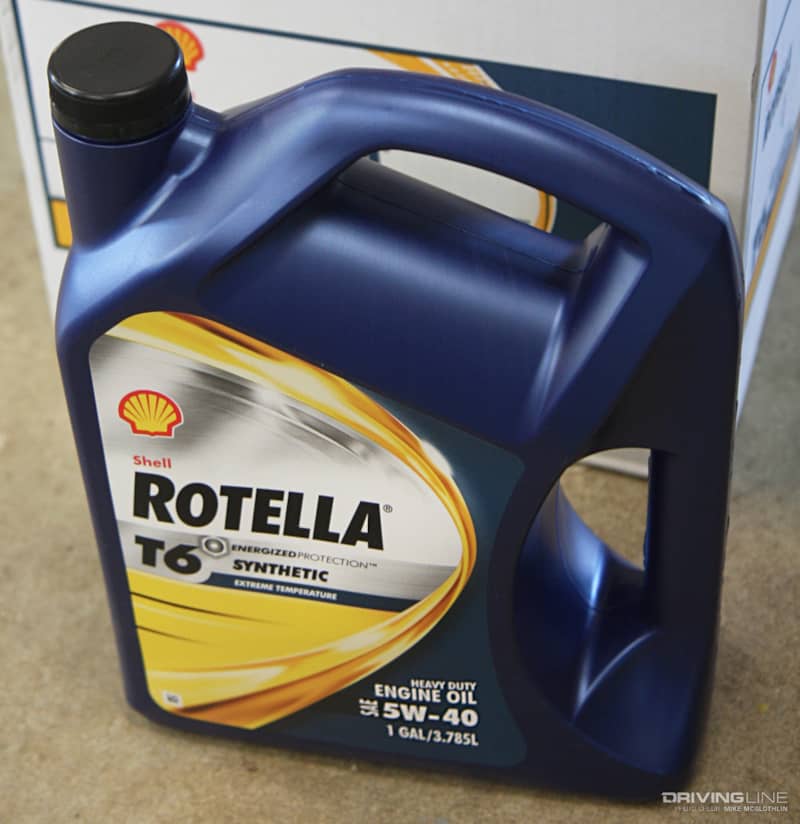
Remember, if you’re still running good ‘ole 15W-40 conventional when it’s 30 below, your engine isn’t going to see ample oil pressure for a considerable amount of time following a cold start (between 5 and 30 seconds!).
Still not convinced you should switch to a lighter weight motor oil for the cold months? Watch this video and see if you change your mind.







